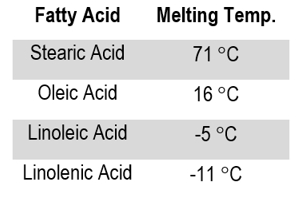Fatty acids are a fundamental category of lipids characterized by their hydrocarbon chains, which vary in length and terminate with a carboxylic acid group. These molecules serve as essential building blocks for more complex lipids, including glycerolipids, sphingolipids, waxes, and eicosanoids. In the structure of a fatty acid, the carbon atoms are numbered starting from the carboxyl carbon, which is designated as carbon number 1. The adjacent carbon to the carboxyl carbon is referred to as the alpha carbon, symbolized by the Greek letter α, while the carbon furthest from the carboxyl carbon is known as the omega carbon, represented by the Greek letter ω.
Understanding the structure of fatty acids is crucial as it lays the groundwork for exploring their various types, such as saturated and unsaturated fatty acids. Saturated fatty acids contain no double bonds between carbon atoms, resulting in a straight chain, while unsaturated fatty acids have one or more double bonds, introducing kinks in the chain. This distinction affects their physical properties and biological functions, making it an important topic for further study.
In summary, fatty acids are vital components of lipids, with their unique structures influencing the formation and function of more complex lipid molecules. The upcoming discussions will delve deeper into the characteristics and nomenclature of different types of fatty acids, enhancing our understanding of lipid biology.


